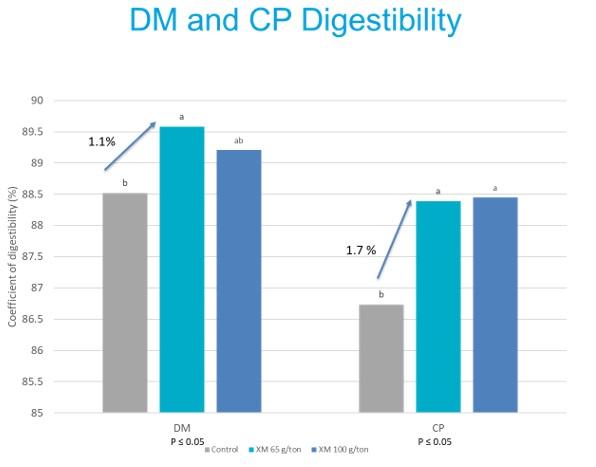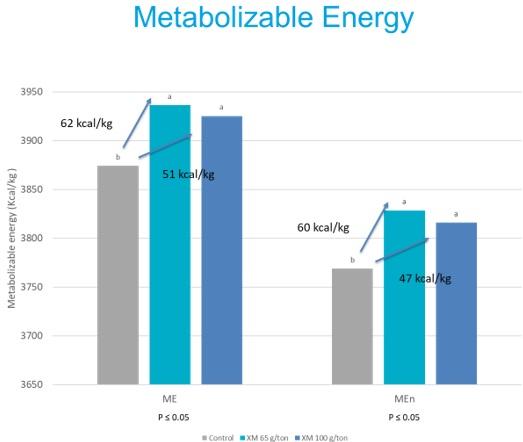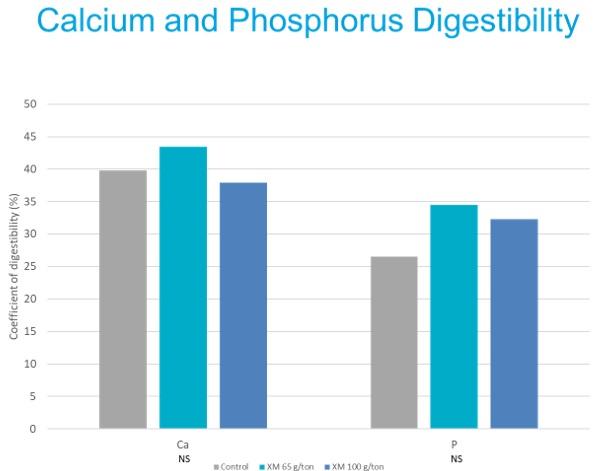Evaluation of the benefits using xylanase on nutrient digestibility in pigs
Published: April 26, 2021
By: Everton Krabbe¹, Luis Ajala¹, Sandra Rodrigues², and Yun-mei Amy Lin²
¹Brazilian Agricultural Research Corporation, Embrapa Swine & Poultry, Concórdia, Santa Catarina, Brazil
²BioResource International, Inc., Durham, NC, USA
Introduction:
The application of enzymes in swine nutrition has gained traction over the past several years. Exogenous enzymes have become an integral part of commercial poultry feed for enhancing the efficiency of nutrient utilization, thereby reducing the cost of production, and improving growth performance. In swine, the application of exogenous enzymes is not yet a common practice, which demands for nutritional matrix validation and further investigation for each type of enzymes.
The objective of this study was to determine the benefits of using xylanase in swine diets through a metabolic assay.
Materials and Methods:
Forty-two castrated male pigs with an average weight of 40-50 kg were randomly assigned to 1 of 3 treatments, with 14 replicates. The dietary treatments were one standard corn and soybean meal diet, with 3 level of Xylanase inclusion levels, 0, 65 g, or 100 g per ton of Xylamax. The nutritional requirements were formulated to the breed. All diets were pelleted at 82°C. The conduct of this test followed SOP4-PESQ-EDM-01 (Determination of digestible and metabolizable energy in pigs). The experiment period was 12 days, allowing 7 days for the animals to adapt to the diet and environment, and 5 days of feces and urine collection.

Results and Discussion:
It was observed that the dry matter digestibility coefficient the treatment with 65 g/ton of the Xylamax presented a higher coefficient (1.1 %) differing from the control. Crude protein digestibility coefficient was significantly higher by 1.7 % with the present of 65 and 100 g/ton of xylanase.



For digestible energy (DE), metabolizable energy (ME), and metabolizable energy corrected for nitrogen (MEn), treatments with 65 and 100 g/ton of feed of Xylamax presented significantly higher DE by 59, and 47 kcal/kg, ME by 62 and 51 kcal/kg, and MEn by 60 and 47 kcal/kg differing from the control. However, no significant difference between treatments for calcium, and phosphorus digestibility was observed.

Conclusions
Addition of 65 g/ton Xylamax significantly improved 59 kcal/kg of digestive energy (p=0.001), 62 kcal/kg of metabolizable energy (p=0.006), 60 kcal/kg of nitrogen corrected metabolizable energy (p=0.02), 1.1% dry matter digestibility (p=0.02), and 1.7% crude protein digestibility (p=0.05). However, it did not significantly affect apparent digestibility of calcium, or phosphorus.
Xylamax at 100 g/ton significantly improved 47 kcal/kg of digestive energy (p=0.001), 51 kcal/kg of metabolizable energy (p=0.006), 48 kcal/kg of nitrogen corrected metabolizable energy (p=0.006), and 1.7% crude protein digestibility (p=0.05). However, it did not significantly affect apparent digestibility of dry matter, calcium, or phosphorus.
These data demonstrated Xylanase under 65 or 100 g/ton supplementation improves energy, crude protein digestibility in typical corn-soy swine diet.
Related topics:
Authors:
BioResource International, Inc
BioResource International, Inc
Embrapa
Recommend
Comment
Share

Would you like to discuss another topic? Create a new post to engage with experts in the community.








.jpg&w=3840&q=75)